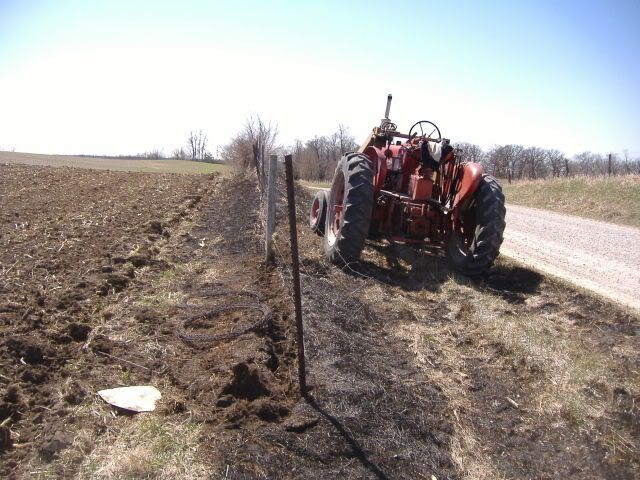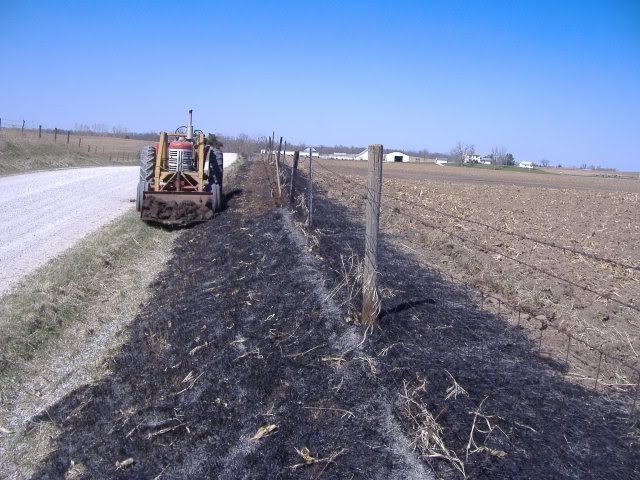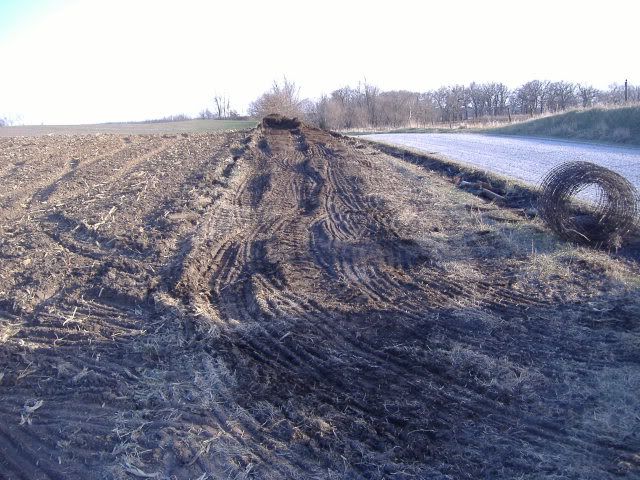super99
Well-known Member
Now that I'm unemployed and have lots of time on my hands, I decided to start on tearing out the fence on west side of the farm. Part of it is clean and some of it has trees growing up in it. All the wire is buried 4 to 8 inches deep with grass roots grown into it. A short 1/2 mile long. Have to dig down next to wire to get it out and every other post is a rotted off wood post, so they have to be dug down to get something to get ahold of. Wish I had a better loader tractor, the old 400 won't hardly steer with a load in the bucket. Got a wash farther down the fence, so I'm taking the dirt down and filling it up. Seems like a waste of good dirt, but it needs to be filled and stopped from washing or I'll have to start farming around it. I'm tired tonite! Chris








